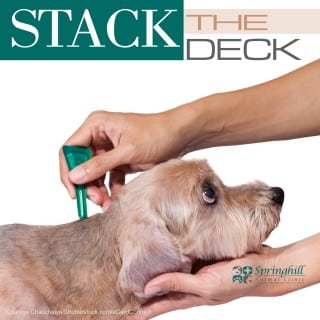Your pet’s behavior is shaped by genetics, social experiences and surrounding environment. Positive or negative, these experiences are what shape your pet’s world. The offshoot of experience can include anxiety; we commonly see this when it comes to trips to our clinic.
Your pet doesn’t have to associate visiting us with a highly stressful situation. Young or old, there are several ways to ease your pet’s anxiety.
Practice handling your pet, such as touching feet, ears and tail, from a young age. Helping your pet understand that not all handling leads to something scary will ease anxieties in and out of our clinic. A bonus of periodically handling your pet in this manner is the larger likelihood of finding any lumps and bumps that shouldn’t be there.
Help your pet associate our clinic with more than checkups by paying a social call from time to time. The younger your pet is when you start this, the more likely she will associate the checkup visits as just another opportunity to see us.
Buy a carrier for your pet long before any appointment and let her adjust to it. Leave it out in her space for several days before the carrier is needed, maybe leaving a few treats, toys or a favorite blanket inside to pique curiosity.
Get her ready for any appointment by taking her for short rides inside the carrier to ease into the situation. And even if these rides are around the block once, always put her inside the carrier; this is the safest place for her to be for both of you in a vehicle. Don’?t feed her for several hours prior to traveling to reduce motion sickness and any post-ride cleanups.
Allow yourself plenty of time to reach your appointment. Not only will it lower your stress, it will also help you drive safely with minimal stops and starts that could cause anxiety and car sickness for your pet. Once at our clinic, speak to your pet in soothing, calm tones, reassuring her before, during and after the appointment. Remember that our pets can sense and respond to our voice inflections and body language and will pick up on our cues for how to respond to the situation.
If you have any questions about reducing your pet’s anxiety about visiting our office, contact us



